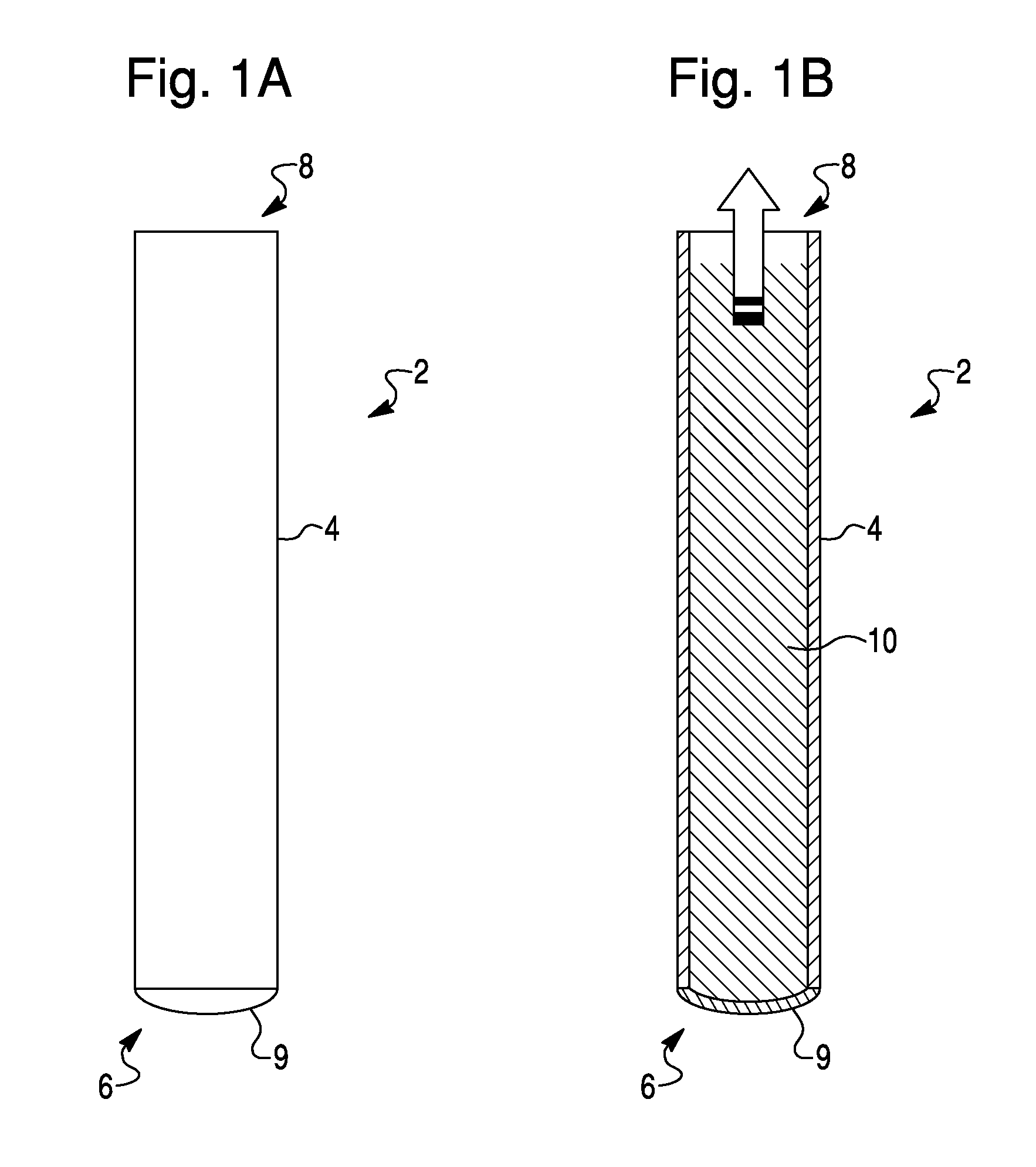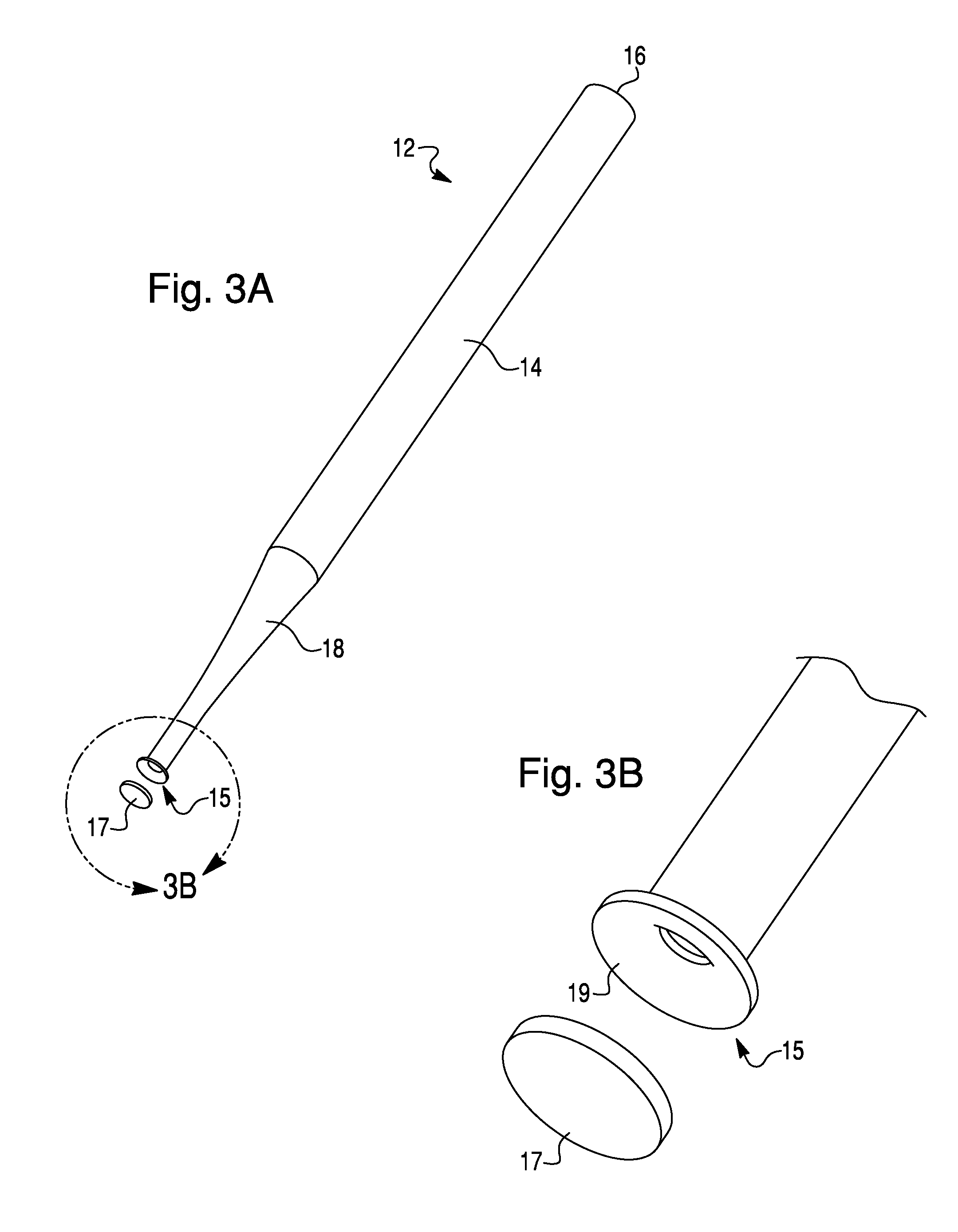Methods For The Isolation, Accumulation, Characterization And/Or Identification Of Microorganisms Using A Filtration And Sample Transfer Device
- Summary
- Abstract
- Description
- Claims
- Application Information
AI Technical Summary
Benefits of technology
Problems solved by technology
Method used
Image
Examples
example 1
Lysis Filtration-Mass Spectrometry Using an Integrated Filtration and Transfer Device
[0112]Microorganisms were “seeded” with an inoculum of approximately 40 or 400 CFU in a 1.0 ml suspension of each test strain into BacT / ALERT® SA or SN bottles containing 10 mLs of human blood. The seeded test samples were then mixed by inverting the bottles several times and incubated in a BacT / ALERT® 3D Combo cabinet and monitored for detection of microbial growth within the bottle.
[0113]Blood culture broth samples were removed from bottles within a few minutes of being flagged positive by the BacT / ALERT® 3D Microbial Detection System. If the bottle was not processed immediately, it was stored at 2-8° C., and later warm broth to ambient temperature by placing the bottle in a 37° C. water-bath for 5-15 minutes prior to testing. Positive blood cultures Broth samples were processed to separate microorganisms from blood and media components that could interfere with subsequent analysis as follows:[011...
example 2
Lysis-Filtration Mass Spectrometry Using an Integrated Filtration and Transfer Device comprising Membrane Filters
[0122]Forty-four (44) microorganism isolates were grown, processed and analyzed by MALDI-TOF MS as described in Example 1, using an integrated filtration and sample transfer device employing Supor® 450 (Pall-Gelman, Port Washington, N.Y.) as a filter material and using a back flush technique to deposit accumulated microorganism onto a MALDI-TOF plate.
[0123]After all microorganism specimens had completely dried, MALDI-TOF Mass Spectra were acquired for each over a mass / charge range of 2,000-34,000 on an Axima Assurance MALDI-TOF Mass Spectrometer (Shimadzu Biotech North America, Maryland).
[0124]After acquisition of each mass spectrum, a table of mass peaks was input into the “Saramis” microorganism identification software (bioMerieux Inc., USA) for analysis. This software is built upon a database of MALDI-TOF Mass Spectra collected of agar-grown microorganisms.
[0125]The Ta...
example 3
Lysis-Filtration Mass Spectrometry using an Integrated Filtration and Transfer Device comprising Depth Filters
[0130]Forty-six (46) microorganism isolates were grown, processed and analyzed by MALDI-TOF MS as described in Example 1, using an integrated filtration and sample transfer device employing depth filters (Whatman GF / F filter (nominal 0.7 micron) and Metrigard (Pall-Gelman) filters (nominal 0.5 micron with acrylic binder)) as a filter material rather than membranes.
[0131]Integrated filtration and sample transfer devices made with the Pall-Gelman Metrigard filters (nominal 0.5 micron with acrylic binder) were only tested on a few of the more problematic samples, but gave results as good as, or better than, the GF / F filters.
[0132]After all microorganism specimens had completely dried, MALDI-TOF Mass Spectra were acquired for each over a mass / charge range of 2,000-34,000 on an Axima Assurance MALDI-TOF Mass Spectrometer (Shimadzu Biotech North America, Maryland).
[0133]After acqu...
PUM
| Property | Measurement | Unit |
|---|---|---|
| Length | aaaaa | aaaaa |
| Length | aaaaa | aaaaa |
| Length | aaaaa | aaaaa |
Abstract
Description
Claims
Application Information
 Login to View More
Login to View More - R&D
- Intellectual Property
- Life Sciences
- Materials
- Tech Scout
- Unparalleled Data Quality
- Higher Quality Content
- 60% Fewer Hallucinations
Browse by: Latest US Patents, China's latest patents, Technical Efficacy Thesaurus, Application Domain, Technology Topic, Popular Technical Reports.
© 2025 PatSnap. All rights reserved.Legal|Privacy policy|Modern Slavery Act Transparency Statement|Sitemap|About US| Contact US: help@patsnap.com



